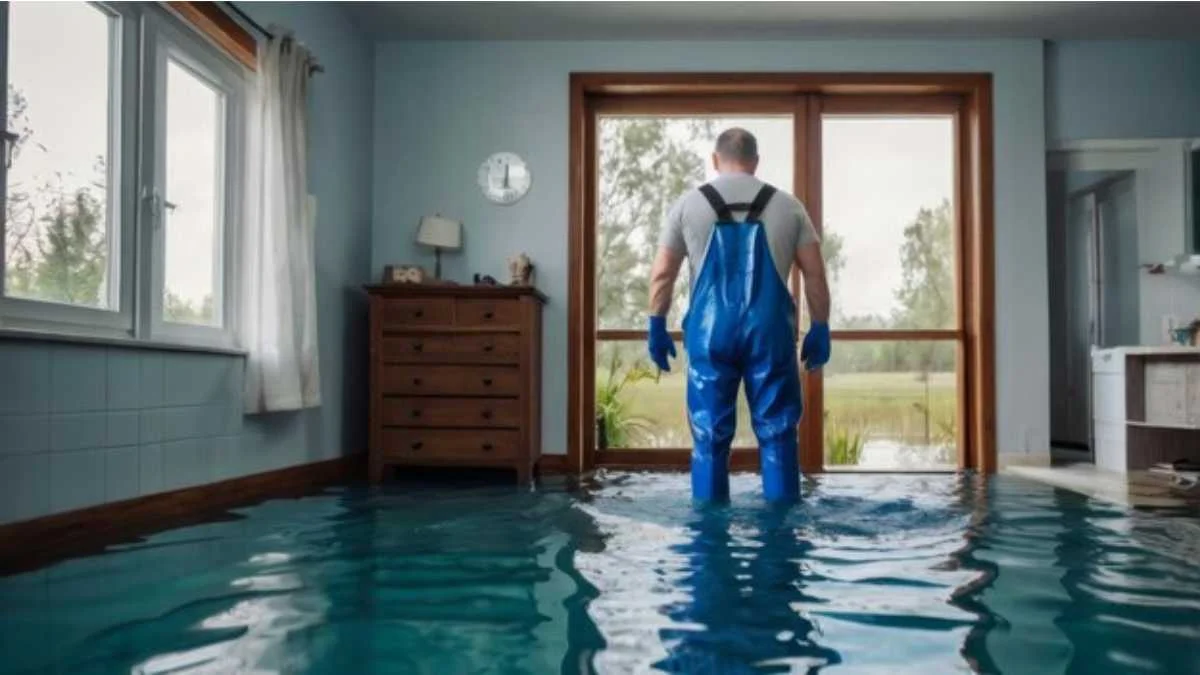HOME IMPROVEMENT
The Step-by-Step Process of Professional Water Damage Restoration

Water damage can seriously affect a home or business, affecting structural integrity, indoor air quality, and personal belongings. Whether caused by a burst pipe, flooding, or a leaking roof, addressing water damage quickly is essential to prevent further issues such as mold growth and material deterioration. Restoring a property after water damage involves more than just drying the affected areas; it requires a thorough and strategic process to remove excess moisture, repair damaged materials, and prevent future problems. We will explore the step-by-step process of professional water damage restoration, outlining how trained technicians restore a property to its pre-damaged condition. From the initial assessment to the final touches, understanding this process helps property owners make informed decisions about protecting their space and minimizing long-term damage.
Step-by-step process
1. Assessing the Damage and Identifying the Source
The first step in water damage restoration is a detailed assessment of the affected areas. Professionals begin by inspecting the extent of the water intrusion, determining how far the moisture has spread, and evaluating the severity of the damage. Using moisture meters, infrared cameras, and other detection tools, they identify hidden pockets of water that may not be immediately visible. This step is essential to understanding the full scope of the damage and developing an effective restoration plan.
Identifying the source of the water intrusion is equally essential. Water damage can result from various causes, such as plumbing failures, roof leaks, or natural disasters. If the source is still active, such as a leaking pipe or a faulty appliance, it must be repaired or shut off to prevent further water from entering the property. Once the source is under control, restoration teams classify the water damage based on contamination levels. Clean water from a broken pipe is handled differently than from a backed-up sewer or flood, which may contain harmful bacteria and toxins. Proper classification ensures the correct cleaning and sanitization methods are used throughout restoration.
2. Water Extraction and Moisture Removal
Once the assessment is complete, the next step is removing standing water and excess moisture from the affected areas. High-powered pumps and industrial-grade vacuums extract large amounts of water quickly, reducing the risk of further damage. The longer water sits, the more it seeps into floors, walls, and furniture, increasing the chances of mold growth and structural weakening.
After removing visible water, professionals focus on drying out the remaining moisture trapped in materials. Heavy-duty air movers and dehumidifiers are strategically placed to speed up drying. This step may take several days, depending on the extent of the damage and the type of materials affected. Regular monitoring ensures that moisture levels continue to decrease, preventing lingering dampness that could lead to future mold or structural issues. Carpets, insulation, drywall, and wood flooring are particularly susceptible to moisture retention, making this step essential to the overall restoration process.
3. Cleaning, Sanitizing, and Preventing Mold Growth
Once the property is thoroughly dried, cleaning and sanitizing begin to remove contaminants, bacteria, and potential mold spores. If the water damage involves contaminated water, surfaces and belongings must be disinfected to eliminate health hazards. Restoration teams use antimicrobial treatments and air scrubbers to improve indoor air quality and prevent mold from developing in humid areas.
Mold prevention is critical to this step, as excess moisture creates ideal conditions for mold growth. If mold has already started forming, affected materials may need to be treated or removed entirely. Items such as upholstered furniture, carpets, and certain types of insulation may not be salvageable if they have absorbed contaminated water. Walls, ceilings, and other porous surfaces are thoroughly cleaned, ensuring no lingering moisture allows mold to spread. Addressing these concerns at this stage prevents further damage and maintains a safe indoor environment.
4. Repairing and Restoring Damaged Materials
The final stage of the restoration process involves trusted water damage restoration contractors repairing or replacing materials that were too damaged to be salvaged. Depending on the severity of the water damage, this may include replacing drywall, repainting walls, installing new flooring, or rebuilding structural elements. The goal is to restore the property to its original condition while ensuring all affected areas are properly treated and reinforced against future water damage.
Major reconstruction may be necessary in some cases, significantly if water has weakened load-bearing structures. Carpentry, electrical repairs, and plumbing work may be needed to restore functionality and safety to the home or business. This step ensures that the space is visually restored and structurally sound. Preventative measures, such as improved drainage systems, waterproofing, and better insulation, may also be recommended to reduce the risk of future water damage.
Water damage restoration is a comprehensive process that requires careful assessment, efficient water removal, thorough drying, and meticulous repairs. Addressing water damage quickly helps prevent long-term issues such as mold growth, weakened structures, and costly repairs. Understanding each step of the restoration process allows property owners to take the necessary actions to restore their space and protect it from future damage. From identifying the source of water intrusion to finalizing repairs, each stage plays a crucial role in returning the home or business to a safe and livable condition. Taking preventative steps after restoration ensures long-term protection, giving homeowners peace of mind and preserving the integrity of their property.
-

 BIOGRAPHY8 months ago
BIOGRAPHY8 months agoBehind the Scenes with Sandra Orlow: An Exclusive Interview
-

 HOME1 year ago
HOME1 year agoDiscovering Insights: A Deep Dive into the //vital-mag.net blog
-

 HOME1 year ago
HOME1 year agoSifangds in Action: Real-Life Applications and Success Stories
-

 BIOGRAPHY1 year ago
BIOGRAPHY1 year agoThe Woman Behind the Comedian: Meet Andrew Santino Wife




























